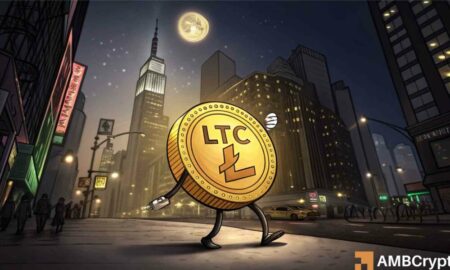The Stability of Bitcoin: Insights into Current Trends and Future Prospects
As Bitcoin continues to hover around the $110K mark, many traders may question why the cryptocurrency remains steady despite a decrease in market leverage. The current stability suggests that speculative bets have diminished, but strong demand at spot prices and a rise in stablecoin liquidity are playing crucial roles in maintaining this price level. Understanding the factors at work can provide insights into Bitcoin’s resilience and future trajectories.
The Current State of Bitcoin
Currently, Bitcoin is exhibiting a cooling trend near the $110K range, yet it’s essential to look beyond surface-level fluctuations. Borrowing activity has declined, liquidity in the market is increasing, and a significant global capital shift is underway. In this landscape, the anticipated next wave of investment might not originate from traditional financial hubs like Wall Street but could emerge from the East, specifically China. This potential shift holds substantial implications for Bitcoin’s future price movements.
Speculative Leverage Cleared
Though Bitcoin’s stable price might induce concern among traders, recent market dynamics indicate a positive trend. Since September, Open Interest across major futures exchanges has notably decreased, suggesting that speculative leverage has been effectively removed without triggering a significant price drop. This development illustrates that the market is undergoing a process of stabilization, with spot demand providing the necessary support to uphold current prices. Moreover, the Spent Output Profit Ratio (SOPR) remains close to 1.0, indicating that traders are making transactions around their cost basis rather than selling under panic, demonstrating a more calculated approach to trading.
Increasing Stablecoin Supply
Another crucial factor contributing to Bitcoin’s price resilience is the rising supply of stablecoins, which recently reached approximately $158.8 billion. This increase signifies that there is ample liquidity on the sidelines, ready to be deployed as market conditions shift. Investors seem to be waiting for the opportune moment to reinvest, highlighting their confidence in Bitcoin’s long-term potential. The accumulation of stablecoins points to an environment conducive to future investment, providing a cushion against sudden market volatility.
China’s Rising Liquidity
China’s M2 money supply has surged beyond $47 trillion, overshadowing the U.S. figure of around $22 trillion. This structural difference in monetary policy and liquidity provision has significant ramifications for global financial markets. Since the Global Financial Crisis of 2009, China has maintained aggressive credit expansion, spurring growth and exports. In contrast, the U.S. has seen its expansion rates decline since 2021. This divergence is crucial as it establishes a new economic landscape where China’s liquidity increasingly influences global markets.
The Impact on Bitcoin
While many market narratives continue to center around U.S. Federal Reserve policies, the growing relevance of China’s liquidity cannot be overlooked. Historical data indicates that stocks and cryptocurrencies have often responded more sensitively to liquidity fluctuations from China compared to the U.S. If capital inflows shift towards China, Bitcoin and cryptocurrencies could lead the way in pricing this new liquidity into the market. Such a transition in capital could enhance demand for Bitcoin, catalyzing the next rally.
Conclusion: Anticipating Future Trends
In conclusion, the current stability of Bitcoin near $110K may seem like a plateau, but it is underpinned by solid fundamentals. The reduction in leverage, increasing stablecoin liquidity, and a significant shift in global liquidity from China create a unique environment ripe for further growth. As new capital flows into the market, especially from the East, Bitcoin stands poised to benefit. Investors and analysts should keep a close eye on these dynamics, as they may define the next chapter in Bitcoin’s evolution and its role in the broader financial ecosystem.
















